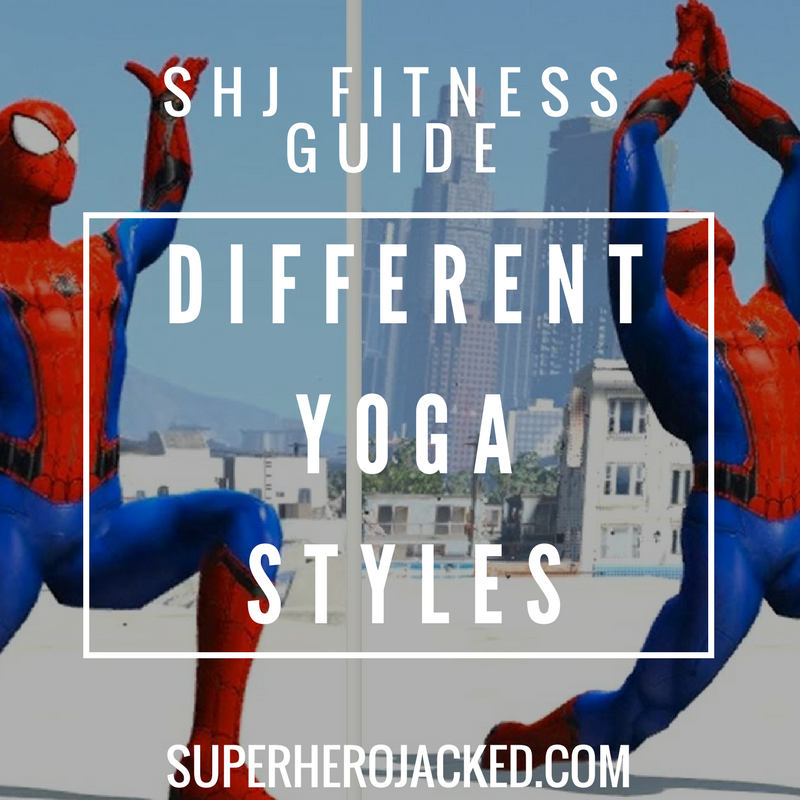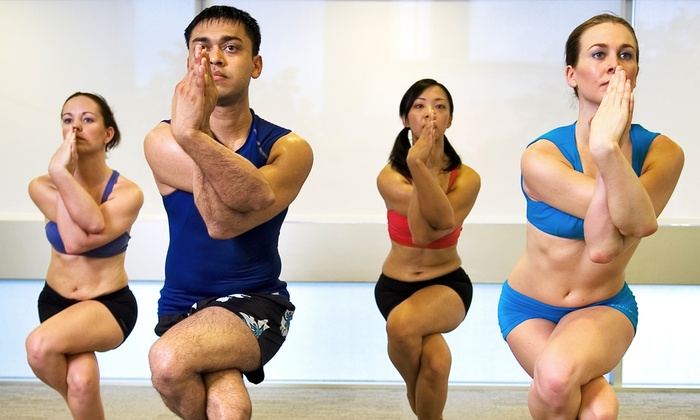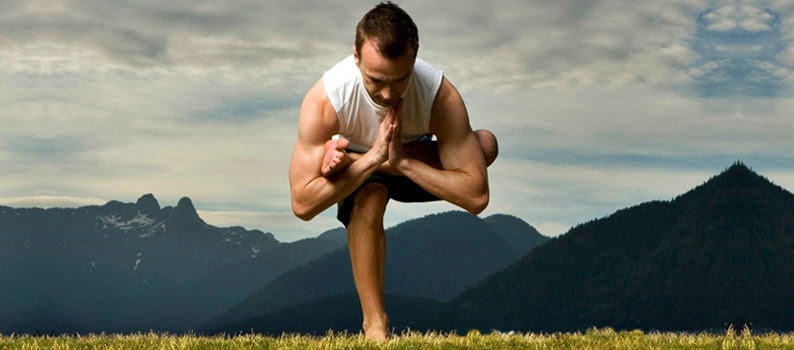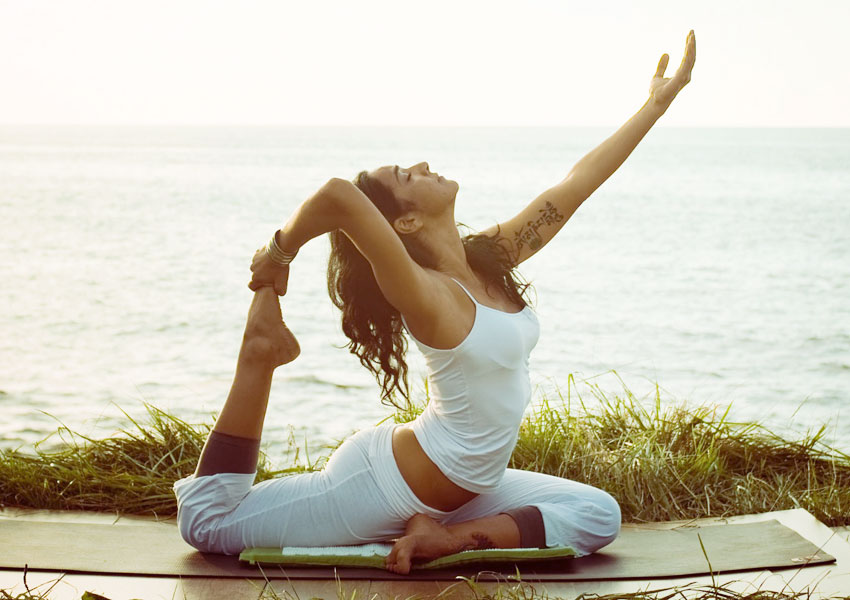Last updated on February 12th, 2023 at 12:47 pm

If you’re new to yoga, chances are you’ve probably seen a variety of different classes in your city or town.
Each possibly falling under the banner of a different name, modern or ancient.
There’s ashtanga, power flow, hatha, acroyoga, vinyasa, and… hip-hop?
Yes, after a while, it all becomes so confusing! What’s the distinction? Is there one true way to practice yoga? What if I’m a complete newb and have NEVER attempted to stretch before in my life? Uh, hello, I don’t speak Hindu- just give me the straight pose, please!
Let’s set the record straight here.
All forms of yoga have a common set of ‘poses’, such as Downward Facing Dog, Warrior, and Final Resting pose. Think of these forms as distinct ‘styles’ akin to that of the many forms of martial arts. We all know that they have common fighting methods, but are still unique. From Hap Ki Do to Wing Chun, these schools of practice come with their own set of philosophies and approaches. Therefore, the same can be said for many of the diverse ways of practicing yoga.
Don’t worry!
I’m going to help you understand each of these yoga styles, so that you can determine where you fit most comfortably in. Whether you’re a beginner or advanced student, there’s a style waiting out there for you to partake in. And feel free to mix and match between them; add some variety to your routine!
 Ashtanga
Ashtanga
A well respected, physically demanding form of yoga headed by guru Sri K. Pattabhi Jois. There are six levels or ‘series’, each with a specific set of poses. As you advance, the difficulty increases, as do the poses. You cannot graduate to the next series without first mastering the one before it (similar to starting out as a white belt in martial arts and ending in black belt). It is also highly advisable you practice with a certified instructor, as many of the advanced poses could lead to serious injury if left unsupervised to the beginner.
Variations: These classes are similar in that they too require a lot physical stamina and strength. Some of which incorporate the principles of ashtanga yoga into their classes.
Power: An umbrella term for Westernized forms of yoga that focus primarily on strength. These classes are more approachable for novices, as they oftentimes refrain from traditional terminology and structure. A typical class is fast-paced, with plenty of hybridized poses blending popular fitness exercises with traditional yoga poses. This will definitely boost your heart rate and work your entire body; have a towel ready to wipe the sweat off your mat!
Notable teachers include Sean Vigue, Baron Baptiste, and Shiva Rea.
Mysore: Somewhat of a precursor to Ashtanga, this style of yoga owes its name to the Indian city Mysore, where Sri K. Pattabhi Jois had taught. In a word, this class could be summarized as intuitive. You have to know what you’re doing in order to practice it, as the instructor actually doesn’t teach the class. He or she only stands by to help out or guide students. Otherwise, this is an entirely self-paced class, and is practiced in the very early morning. Perfect for early birds!
Kokoro: Translated as ‘heart’ or ‘the feeling of the heart’, this modern take on yoga was developed by former U.S. Navy Seal Mark Divine for elite special-ops soldiers. It is now free and available to the public, and is intended to merge, “the warrior’s heart or spirit- with ancient physical poses or ‘asanas’- that transform your body into an instrument of power and performance.” [1] Ladies, if you know a guy who thinks yoga is limited to the so-called fairer sex, refer them to this. Even our troops practice yoga!

Bikram
They say you have the ‘flavor of the month’, but with this modern approach to practicing yoga, it’s more like you’re addicted to the ‘flavor of the year’. In this class, there are three constants: twenty-six poses- always practiced in the same exact sequence-, a room heated above one-hundred degrees Fahrenheit, and sweat. If you read my recent article on developing super hero flexibility, you’ll know that I am a proponent of practicing yoga when you’re body is warmed up. Well, this of course takes that to another level. Aside from the fact you’ll be dripping off sweat in places you didn’t think were possible, this class is great for understanding some basic poses, and sticking to a routine. That way, as a beginner, you don’t have to play catch-up. You’ll be able to memorize each pose without having to worry about the teacher mixing things up. Just be sure not to wear anything too suffocating, and bring some water with electrolytes to stay hydrated, a mat cleaner (because it WILL stink after the class), a towel, and a pair of clean clothes to change into when you’re done. Studios typically include a shower in their locker room. Speaking from personal experience, most studios are saturated in the smell of sweat, and so will you once you walk out. Please clean yourself up as soon possible, especially if you’re carpooling with someone else.
Note: Bikram Choudhury, the founder of Bikram yoga, has been stepped in boiling controversy and scandal. From copyright claims [2] to lawsuits and arrest warrants [3], he’s very much a polarizing figure in the yoga community. I advise you separate the founder from the practice in case any of these scandals prevent you from giving it a try.
Variations:
Hot Yoga: Taking a note out of Bikram’s playbook, Hot Yoga is an umbrella term for any type of heated yoga. Studios control the variation in temperature, going as low as eighty degrees Fahrenheit to as high as one hundred and five degrees. It really depends on the teacher when it comes to the exact temperature. Either way, there will be no shortage of sweat. However, the structure of the class deviates into more traditional yoga in that no two classes are exactly the same. The teacher may treat it simply as a regular class, simply done in a heated environment. They may also choose to up the ante by combining it with a form of Power Yoga (see above).

Hatha
In most cases, Hatha yoga is just a standard yoga class, with no distinctions like focusing on strength or meditation. Personally, I think it is fair to say that the type of yoga taught in commercial gyms is Hatha. However, Hatha does tend to lean towards holding poses for several breaths, thus moving in a slower pace when compared to more vigorous styles. Otherwise, it’s a very general yoga class, with variety dependent upon the teacher. Accessible to all levels of experience.
Variations:
Ananda: A form of Hatha yoga based upon the teachings of Paramahansa Yogananda, the famous yogi and guru known for bringing yoga to the West. His book, Autobiography of a Yogi, is often the cornerstone of required reading for yoga students undergoing teacher training. Ananda yoga was established by Yogananda’s disciple Kriyananda, and is a very gentle practice. It is heavily based on spirituality, controlling energy, and focusing on cultivating an inner awareness and perceiving the poses as natural expressions of consciousness, emphasized through the use of mantras or affirmations. If Dr. Strange had a regular yoga practice, I am certain that Ananda yoga would be his go-to.
Dharma: This style of yoga is another awareness-based class, helping to cultivate mindfulness and relaxation (so it’s quite gentle). It incorporates elements of Buddhist, Zen and Tibetan philosophy, as well as each of their various techniques towards meditation. Sticking to the theme of super heroes practicing yoga, I’d say that Daredevil’s mentor Stick would probably be practicing this style if given the chance.
Note: Dharma yoga is not to be confused with Sri Dharma Mittra, a respected teacher of Ashtanga known for his famous Master Yoga Chart of 908 Postures, in which he photographed himself executing 1, 300 yoga poses. This was done in 1984, way before Instagram popularized the trend of showing off of one’s flexibility and skill on social media. It is meant to serve as a teaching tool for both students and teachers alike.
Sivananda: A more beginner to intermediate class, interspersing graceful flows with several moments of final resting or deep relaxation pose (Savasana). Expect to practicing chanting, meditation, readings from yogic texts, and breathing techniques throughout the class. Sivananda traces back to guru Swami Sivananda, who was responsible for establishing several international ashrams throughout the mid 20th century.
Jivamukti: A modern variation of Hatha yoga founded by David Life and Sharon Gannon in New York City. Chanting, kirtan (sacred music), meditation, and breathing techniques combine with energizing flows and holding specific poses for certain lengths of time.

Iyengar
Accuracy, precision, safety, and accessibility all describe this practiced, founded by guru B.K.S. Iyengar, whose passing in 2014 devastated the yoga community. He is also the author of Light on Life and Light on Yoga, two favored reading materials for students and teachers. This class is suitable for everyone, no matter the level of experience, with a razor sharp focus on correct alignment. It incorporates the use of tools such as straps, blocks, and inversion seats to make the practice adaptable to all body types and levels of experience. It’s great for a tune-up, physical therapy, posture, flexibility, and mobility. Certification in this type of yoga is strict and quite rigorous for prospective students looking to teach it; therefore, you are in more than capable hands when walking into a class.
Kundalini
This class is an atypical one for the vast majority of Western society. Those with a deep affinity for the practice choose to dress entirely in white, in addition to donning a white turban and refraining from cutting their hair. Founded by guru Yogi Bhajan, a typical class incorporates kriyas, or practices, involving quick, repetitive motions (executed up to several minutes at a time), various breathing techniques, chanting, chakra balancing, mantras, and meditation. Those looking for a deep dive into traditional yogic roots and history would especially enjoy this practice.
Vinyasa
One of the more pervasive styles of yoga, Vinyasa is targeted for those looking for a more active, physical practice. It is a dance-like, fluid practice in which students are instructed to move (or ‘flow’) between poses with grace and ease. However, appearances can be deceiving. Some classes can be as intense as Ashtanga, interchanging challenging holds with quick, power-driven bursts. You may need to experiment around with different teachers before you find one that truly meshes with your personal preferences, as every class varies in intensity. A variety of poses are practiced, in addition to deviations in Western ‘fitness’ exercises. Intermediate to advanced students in particular would enjoy this class, or those seeking out an active practice.

Modern Interpretations:
Instead of listing each and every variation of these styles, I’m going to mention that anyone can slap their name next to the word yoga and patent their own unique blend. There are so many varieties of yoga out there that I couldn’t possibly list them all here. Do your research, inquire, and see how a class is structured before jumping in. You’ve got everything from classes choreographed to hip-hop music to those taught on a farm, next to goats. [4]
Finding Your Style
I’ve organized the following styles of yoga for you to refer to in case you’re still not quite sure what to practice.
Strength Energetic
Ashtanga Ashtanga, Power Yoga
Power Yoga Jivamukti
Kokoro Yoga Vinyasa
Hatha*
Meditative, Slow Flexibility
Kundalini Ashtanga
Ananda Iyengar
Dharma Hatha*
Sivananda
Hatha*
Challenging, Advanced Beginner
Ashtanga, Power Yoga Hatha*
Mysore Ananda
Bikram Dharma
Hot Yoga* Iyengar
Jivamukti Kundalini
Vinyasa* Bikram
Kokoro Yoga (Only because you are doing the same poses
and sequence. It’s easier for newcomers to
adapt overtime.)
Intermediate
Ashtanga, Power Yoga
Kokoro Yoga
Bikram
Hot Yoga
Jivamukti
Hatha
Ananda
Iyengar
Sivananda
Vinyasa
*Keep in mind that although some of them may be listed as ‘intense’ or ‘energetic’, it doesn’t mean they will always be that way, as it depends on the teacher and whether or not it was styled for beginners or advanced students.
When it comes to styles, there’s no one-way to practice yoga.
There are days when one feels more invigorated and ready to take on a more challenging flow, and others when the last thing anyone wants to do is power through a vigorous asana. Feel free to mix things up.
Honor your body.
– Sam, aka, The Dragon
References:
[1] http://register.unbeatablemind.com/kokoro-yoga/
[2] https://en.wikipedia.org/wiki/Copyright_claims_on_Bikram_Yoga
[4] http://goatyoga.net/

SUPERHUMAN SECRETS V.2
NOW UPDATED AND EXPANDED WITH A NEW SECTION & SEVEN BONUSES
USD$29 USD$14.95



